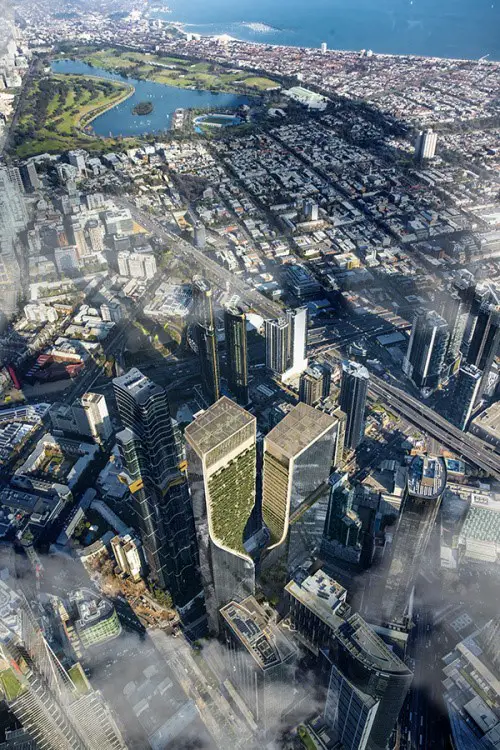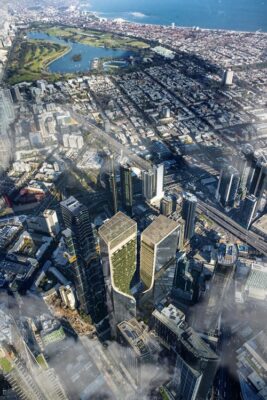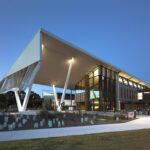The Right Balance for a Holistic Approach to Sustainable Design, Green Building News, Nearly zero-energy buildings projects
The Right Balance for a Holistic Approach to Sustainable Design
9 April 2022
The Right Balance for a Holistic Approach to Sustainable Design Help Guide
Sustainability Report – Finding the Right Balance for a Holistic Approach to Sustainable Design
As designers, we are acutely aware that many concerns connected to the built environment have been fueled by the COVID-19 pandemic and that these have required a renewed focus within our profession. Conscious consumerism is perhaps one of the most far reaching of these and is currently posing complex questions that, above all, require holistic solutions.
With the emergence of the ESG (Environmental, Social and Governance) system, investors (along with policymakers, and other key stakeholders) are becoming increasingly concerned with safeguarding businesses from future risks, and as a result, are now prioritising socially and ethically responsible, sustainable and impact-related investment. This is very good news, as it has also meant that a large number of companies have already responded by announcing net-zero or carbon-neutral commitments and are pledging to reduce greenhouse gas emissions and invest in climate action.
For quite some time already, we, as an architecture practice, have been pre-occupied with questions surrounding the sustainability of our projects and how we can design our buildings with the health of the planet in mind. However, as a design practice, we equally have to ensure that our buildings and cities are healthy for people too.
In the following report we ask, with this recently expanded focus on mitigating risk and a European goal to lower carbon emissions by 55% by 2030, what are the challenges involved for architects in creating truly sustainable buildings, while also designing healthy and vibrant environments for the people that will use them?
The STH BNK by Beulah mixed-use project by UNStudio and Cox Architecture is set to become the tallest vertical garden in the world, setting a precedent for future skyscrapers to incorporate nature:
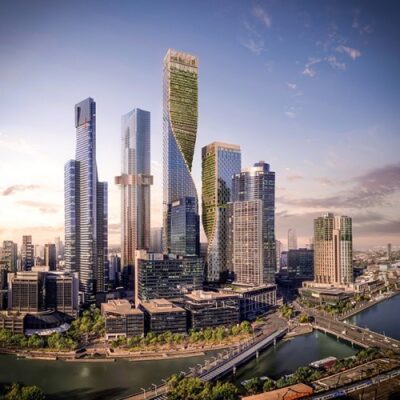
images © Beulah, produced by Norm Li
Finding the right balance
To date, and to a large extent, success has often been more likely when we have found the right balance between our sustainable and design ambitions and our client’s wishes, budgets and commitment to environmental goals. But experience has also shown us that there are numerous other complex and conflicting factors that play an important role in determining what level of sustainability or circularity can currently be achieved in different building typologies.
Success has also been determined by a commitment to continued research into everything from materials to structural solutions. For this reason we have established an in-house group, the ‘Sustainability Engineering Group’, which understands sustainability as a central guiding force in design and takes a holistic approach to creating not only sustainable projects, but ones that contribute to the overall health of users while retaining aesthetic qualities. Key to the work of the group is the bridging of an engineering approach with parametric design.
Another essential facet of the work of this group is to create a design culture at the studio in which sustainable thinking is fundamental from the get-go. We believe that all design decisions should be made based on a broad knowledge of sustainable and circular principles and with the best possible computational tools for accurate analyses. Sustainability, now more than ever before, has to become part and parcel of both design thinking and the computational design process.
STH BNK by Beulah will provide people with the opportunity to connect with nature throughout the entirety of the two towers by way of pocket parks throughout the building that culminate in a publicly accessible rooftop sky garden:
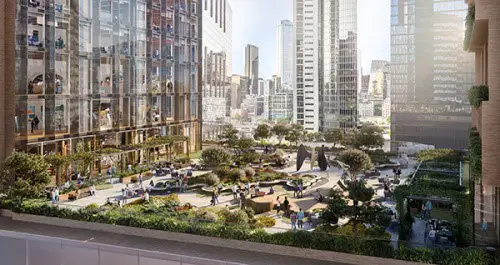
image courtesy of UNStudio
One obstacle we often come up against however is a conflict of priorities. When it comes to energy consumption, yes, it is possible to design energy neutral, or even energy positive buildings in many typologies. But we would argue that this should always be balanced with careful consideration of all factors that affect the health of the individual, communities and the economy.
In addition, in order to be truly impactful, architecture should always combine environmental efficiency and aesthetic qualities. We believe that pragmatism should never be at the expense of beauty or comfort; of the total experience of architecture and that the aesthetic qualities of buildings are essential to how we fully experience them.
Understanding the challenges
Although, when it comes to the environment, it is widely understood that renovating or re-purposing existing building stock is preferable to new builds, often this is simply not a viable option. When this is the case, in our experience, different typologies present different challenges and require different resolutions.
For example, in terms of post-occupancy energy consumption, office buildings suffer from heat gain and require cooling, while housing needs to be heated. One solution would be to opt more frequently for mixed-use buildings, where the different programmes can mitigate each other’s energy demands.
Overall, however, the most pressing questions arise concerning the full extent to which a sustainable approach can truly be considered holistic, because in the end, there is a global cost in every decision we make. And this is where the real challenges present themselves.
The Fellenoord 15 building in Eindhoven is one of our current renovation projects that will complete this year. Careful attention was paid to retaining numerous original features in the transformation of the building:
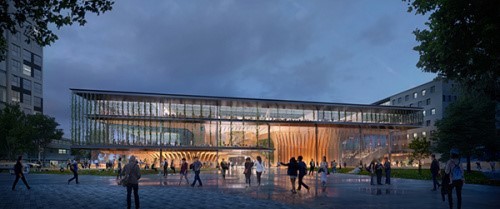
photo : Studio Hans Wilschut
Energy consumption and harmful emissions can refer to post-occupancy or construction, while immediate calculations of material footprints and quantities can significantly contrast with designing for circularity, or extending the life span of materials. If we use more materials now to ensure a building can be adaptively designed for future retrofitting across all of its layers, we may be starting with a higher footprint, but actually causing less harm over time.
If we are making material choices, do we calculate their footprint based on their embodied C02, their sustainable or local sourcing, or their potential for re-use? And if we elect to design for circular use, how do we connect or assemble these materials to ensure they can be dismantled later without damage?
Which materials embody the least C02 and what are the benefits and pitfalls of using them (structurally or otherwise) in different types of buildings? When is a hybrid choice preferable? Which improvements are currently being undertaken to make traditional construction materials less harmful to the environment during construction? Or which bio-based alternatives should we be considering?
Another issue is the limited roof surface area that can be used for energy harvesting on some building types. Is energy harvesting always the right use of these surfaces? Should we, in some cases, in fact be using them for green spaces and social sustainability, while using other surfaces for PV?
Solar Visuals is an aesthetic PV solution for use on facades. UNStudio were part of an initial consortium to research the viability of this solution. The product has since been developed by UNSense, TS Visuals and TNO and brought to market.
We also have to consider which certification system best suits our goals: a system based on energy use, such as BREEAM? Or the WELL Building standard, which takes a holistic approach to health in the built environment by addressing behavior, operations and design and is more focused on human health?
In short, all of this means that there is no go-to solution, no preferable material, no all-encompassing certification system. All of these questions and choices become decisions that have to be made and carefully calculated in our designs as we conceive them.
In the end, the role of the architect is to combine knowledge and expertise – their own and that of all other stakeholders – into a holistic, integrated design that serves both the environment and the user.
But we don’t do this on our own. As a United Network, we assemble the best teams of experts to work with on every project. In so doing, we learn from each other, we inspire each other and ultimately we tackle the challenges together, holistically.
See here also an in-depth interview with Arjan Dingsté, Director and Senior Architect at UNStudio, in which he outlines the challenges of taking a holisitic approach to sustainability and how unexpected aesthetic or design results can be derived from the process
Echo at TU Delft in the Netherlands is an energy positive and flexible building that also makes the health of the user a priority by ensuring plentiful daylight, clean air and a clear visual connection to nature:
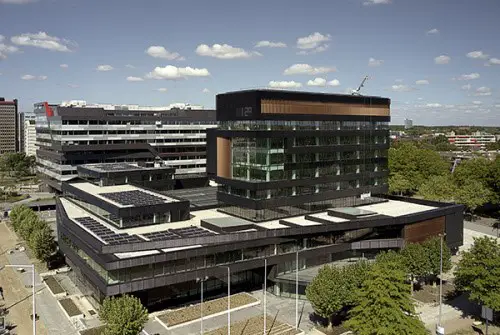
image : Plompmozes
UNStudio Architects
Eco Architecture
Contemporary Green Architecture Design
Sustainable Building News
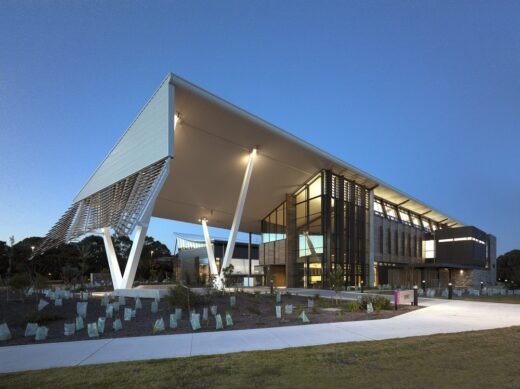
photo © Richard Glover / Matt Estherby
Sustainable Building News
UK Government energy security strategy feedback
British energy security strategy news
Climate and biodiversity emergency
Climate and Biodiversity Emergency
Buildings / photos for the The Right Balance for Sustainable Design page welcome

